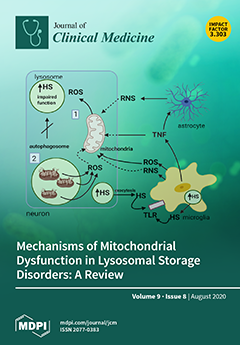Background: Bevacizumab, a vascular endothelial growth factor (VEGF) monoclonal antibody commonly used for the treatment of various cancers, is often associated with adverse cardiovascular effects such as hypertension, cardiac and cerebral ischemia, thrombosis, and bleeding events. Factors associated with increased risks of adverse
[...] Read more.
Background: Bevacizumab, a vascular endothelial growth factor (VEGF) monoclonal antibody commonly used for the treatment of various cancers, is often associated with adverse cardiovascular effects such as hypertension, cardiac and cerebral ischemia, thrombosis, and bleeding events. Factors associated with increased risks of adverse cardiovascular effects with bevacizumab have not been intensively studied. In this study, we determined factors associated with hospital admissions due to cardiovascular complications in patients who received bevacizumab for cancer treatment.
Methods and Results: We retrospectively collected data for all patients treated with bevacizumab between the 1st January 2016 and the 31st December 2017 at the Hunter New England Local Health District. Patients’ characteristics and their medical history were obtained from hospital electronic medical records. Outcome data were sourced from the Institutional Cardiac and Stroke Outcomes Unit database. A total of
n = 230 patients (mean age 65, males
n = 124 (53.9%)) were treated with bevacizumab during the study period.
N = 28 patients were admitted to hospital for a major cardiovascular-related event. Higher total treatment dose (
p < 0.05), concomitant hypertension (
p = 0.005), diabetes (
p = 0.04), atrial fibrillation (
p = 0.03), and lack of use of statin therapy (
p = 0.03) were key contributors to hospital admission.
Conclusions: Results of our study highlight the fact that patients with concomitant baseline cardiovascular disease/risk factors are at an increased risk of cardiovascular hospitalization related to bevacizumab treatment. Careful baseline cardiovascular assessment may be an essential step to minimize cardiovascular complications.
Full article






